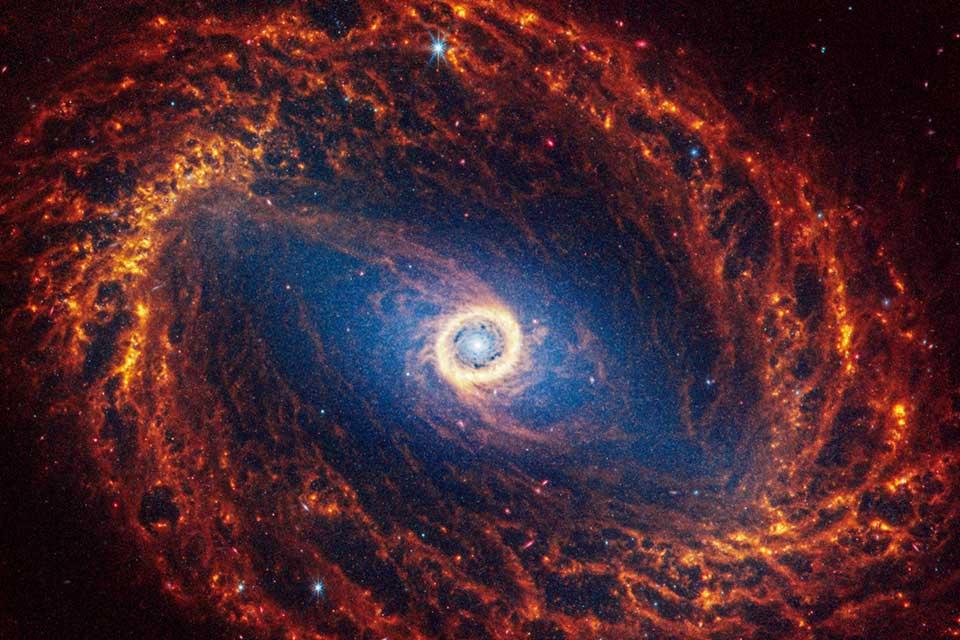14. The Sun#
14.1. The Source of the Sun’s Energy#
The Sun will not last forever, where its lifetime is limited by the amount of fuel available. We can calculate how long the Sun will live by comparing the mass available for nuclear fusion and the total mass available.
Note
In other chapters, we could use ratios to simplify the mathematics. Unfortunately, this won’t be the case here. It may be helpful for you to review the topics in Chapter 1, specifically for scientific notation and/or how to use the EE button on your calculator.
Some mass is lost when converting four hydrogen nuclei (i.e., protons) into a single helium nucleus. The mass lost is converted into energy. First, let’s do some accounting:
\(m_{\rm H} = 1.6726 \times 10^{-27}\ {\rm kg}\); mass of a single proton
\(m_{\rm He} = 6.6447 \times 10^{-27}\ {\rm kg}\); mass of a single helium-4 nucleus
Assuming no mass loss, we expect that \(4m_{\rm H} = m_{\rm He}\). Instead, we must consider the mass lost \(m\) by
We can calculate the mass loss as \(m/(4m_{\rm H}) = 0.0068\), or about \(0.7\%\). The seems like a small amount, but the Sun has lots of atoms. Fusing a single kilogram of hydrogen into helium releases about \(6.3\times 10^{14}\ {\rm J}\) of energy. To see how much the Sun must be fusing each second to produce its current luminosity, we compare the energy used per time with the energy used per mass, or
This is about \(620\) billion \(\rm kg\) of hydrogen converted into helium each second, where \(0.7\%\) of it (\({\sim}4\) billion \(\rm kg\)) is converted to energy in the process.
How much longer will the Sun last? Astronomers estimate that only \(10\%\) of the Sun’s mass is available for fusion because the other \(90\%\) will never get hot (or dense) enough for fusion to occur. The total mass of the Sun is \(1.989 \times 10^{30}\ {\rm kg}\), so only \(1.989 \times 10^{29}\ {\rm kg}\) is available for fusion.
Let’s estimate how much mass \(M_{\rm year}\) the Sun consumes in a year using the mass loss that we calculated above. This is written as
If we know how much fuel the Sun has (\(1.989 \times 10^{29}\ {\rm kg}\)) and we know how much the Sun fuses each year (\(2.0 \times 10^{19}\ {\rm kg/yr}\)), we can divide the the total amount by the amount used per yeare to find the lifetime \(\tau\) of the Sun:
When the Sun formed, it had enough fuel to power it for about \(10\) billion years. The Sun is nearly halfway through its lifetime of hydrogen fusion.
#scipy.constants is a library that has common constants in physics/chemistry
#https://docs.scipy.org/doc/scipy/reference/constants.html
from scipy.constants import m_p, year
M_sun = 1.989e30 #mass of the Sun in kg
L_sun = 3.828e26 #Luminosity of the Sun in W (or J/s)
energy_kg = 6.3e14 #energy released to fuse 1 kg of hydrogen
m_He = 6.6447e-27 #mass of a helium nucleus in kg
m = 4*m_p - m_He
print("The mass lost that is converted into energy is %1.4e kg." % m)
mass_loss = m/(4*m_p) * 100
print("The mass loss (percentage) is %1.2f percent." % mass_loss)
print("------")
energy_release = L_sun/energy_kg
print("The mass fused per second is %1.1e kg/s." % energy_release)
print("------")
M_year = energy_release*year
print("The mass consumed by the Sun each year is %1.1e kg/yr." % M_year)
M_fuel = 0.1*M_sun
tau = M_fuel/M_year
print("The lifetime of the Sun is %1.1e yr." % tau)
The mass lost that is converted into energy is 4.5788e-29 kg.
The mass loss (percentage) is 0.68 percent.
------
The mass fused per second is 6.1e+11 kg/s.
------
The mass consumed by the Sun each year is 1.9e+19 kg/yr.
The lifetime of the Sun is 1.0e+10 yr.
14.2. Sunspots & Temperature#
Sunspots are \({\sim}1500\ {\rm K}\) cooler than their surroundings. What does that lower temperature tell us about their luminosity?
Recall the ratios we used in Chapter 5 to compare how much brighter the Sun is compared to the Earth. We used a form of the Stefan-Boltzmann law with the flux as
We want to compare how the flux of the sunspot with a similar sized section of the its warmer surroundings. Let’s use the ratios again so that we don’t have to lookup \(\sigma\). Comparing the spot to the surface, we have
Therefore, the flux coming from a sunspot is only \(30\%\) of that coming from the nearby surface (i.e., \(\mathcal{F}_{\rm spot} = 0.3\ \mathcal{F}_{\rm surface}\)). The sunspot is about \(30\%\) as bright as the surrounding photosphere. However the sunspot would still be brighter than the full Moon.
T_surf = 5777 #average surface temperature of the Sun
T_spot = T_surf - 1500 #estimate sunspot temperature
F_ratio = (T_spot/T_surf)**4
print("The sunspot emits about %1.1f times as much light as the surrounding surface." % F_ratio)
The sunspot emits about 0.3 times as much light as the surrounding surface.


